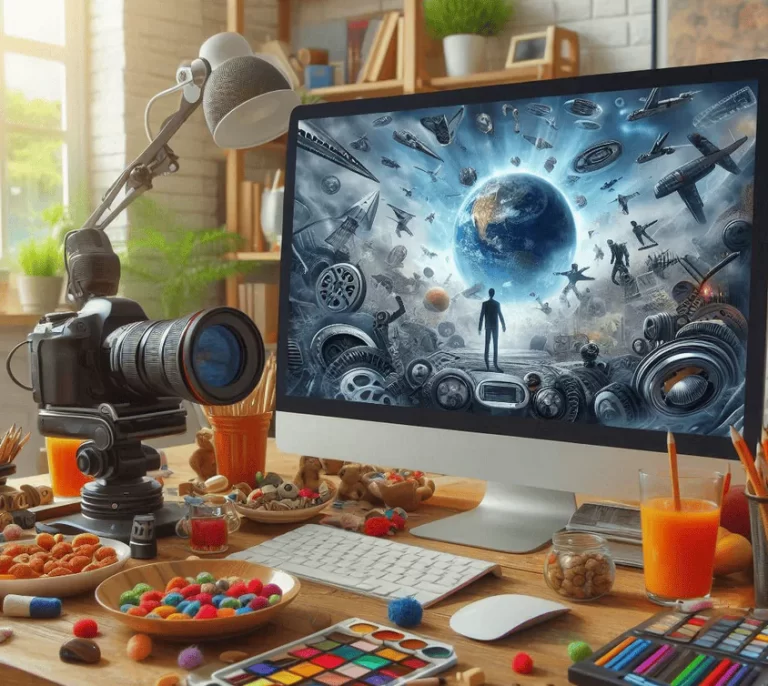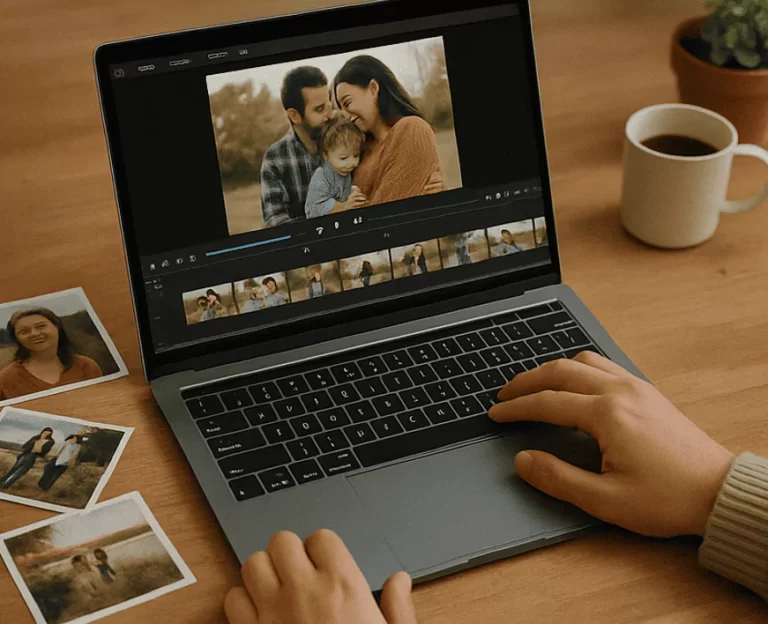
Photo Editing In the realm of photography, capturing a stunning shot is only half the story. The other half lies in the art of photo editing, where raw images are refined, enhanced, and transformed into visual masterpieces. For those ready to move beyond fundamental adjustments, advanced techniques offer unparalleled creative freedom and the ability to craft images that resonate deeply with viewers.
This guide dives into sophisticated photo editing methods, enabling photographers and visual artists to elevate their craft. Whether you’re looking to master color grading, retouch portraits, or create composite imagery, these techniques will empower you to unlock new levels of artistic expression.
The Importance of Advanced Photo Editing
Photography serves as a medium of storytelling, and photo editing acts as the final draft. While basic edits like exposure, contrast, and cropping are essential, advanced techniques allow you to reinterpret a scene entirely. From enhancing minute details to adding surreal elements, the possibilities are limited only by your imagination.
Advanced editing transforms ordinary photos into extraordinary works of art. It ensures that every pixel contributes to the visual narrative. Moreover, it allows photographers to develop a unique style, setting their work apart in an oversaturated market.
Tools to Enable Advanced Editing
Before diving into specific techniques, it’s essential to equip yourself with the right tools. Advanced photo editing requires software and hardware that can handle intricate adjustments and complex workflows.
1. Professional-Grade Software
Advanced editing demands tools that go beyond basic adjustments. Here are some standout options:
- Adobe Photoshop: The undisputed king of advanced photo editing, Photoshop offers pixel-level control, powerful compositing tools, and a vast library of plugins.
- Capture One Pro: Renowned for its tethered shooting capabilities and superior color grading tools, this software is a favorite among studio photographers.
- Affinity Photo: A versatile and budget-friendly alternative to Photoshop with robust features for retouching, compositing, and more.
- ON1 Photo RAW: This software combines the power of raw processing with advanced effects and masking tools for creative workflows.
2. Hardware Essentials
Sophisticated editing demands precision, which relies heavily on the quality of your hardware.
- High-Resolution Monitor: A monitor with 4K resolution and wide color gamut support (like AdobeRGB) ensures that you can accurately assess colors and details.
- Graphics Tablet: Devices like the Wacom Cintiq allow for natural, precise brush strokes, particularly useful for dodging, burning, and masking.
- Fast Computer: A system with ample RAM, a powerful processor, and a dedicated GPU minimizes lag during intensive editing processes.
Mastering Advanced Techniques in Photo Editing
Once your tools are ready, it’s time to explore the techniques that define advanced editing. These methods demand practice but yield transformative results.
1. Frequency Separation for Portrait Retouching
Portrait editing requires a delicate balance between enhancing features and preserving authenticity. Frequency separation divides an image into two layers: one for texture and another for color/tone. This allows for targeted adjustments, such as smoothing skin or evening out tonal irregularities, without blurring fine details like pores or hair.
- Use a high-pass filter to isolate textures.
- Adjust the tonal layer to correct blotches or uneven skin tones.
- Maintain a natural look by working in small increments.
2. Dodge and Burn for Depth
Dodging (lightening) and burning (darkening) specific areas can create dramatic depth and guide the viewer’s eye. This technique mimics how light interacts with a scene, making it invaluable for portraits, landscapes, and product photography.
- Use soft brushes with low opacity for subtle effects.
- Apply dodge and burn on separate layers for non-destructive editing.
- Pay attention to natural light direction for realistic enhancements.
3. Advanced Color Grading
Color grading goes beyond basic adjustments, shaping the emotional tone of an image. By tweaking the hues of highlights, mid-tones, and shadows independently, you can evoke specific moods or match a cinematic aesthetic.
- Use gradient maps for custom tonal overlays.
- Experiment with split toning to introduce complementary colors in highlights and shadows.
- Reference color wheels and palettes to maintain harmony.
4. Creating Realistic Composites
Composite editing involves merging elements from multiple photos into a single image. This technique is often used in commercial photography, fantasy art, and surrealist compositions.
- Match lighting and perspective for seamless integration.
- Use advanced masking techniques to isolate subjects with precision.
- Incorporate shadow creation and color matching to unify the composite.
5. HDR Blending
High Dynamic Range (HDR) editing combines multiple exposures to retain detail in both highlights and shadows. While HDR can be achieved through automatic tools, manual blending provides greater control and a more natural result.
- Shoot bracketed exposures (underexposed, normal, and overexposed).
- Blend exposures manually using layer masks.
- Avoid over-processing to maintain a realistic look.
Exploring Texture and Detail Enhancement
Advanced photo editing often involves emphasizing textures to add depth and intrigue. Whether you’re working with landscapes, macro photography, or architectural shots, texture can significantly enhance visual impact.
1. Clarity and Dehaze
Clarity adjustments target mid-tone contrasts, enhancing textures without affecting global contrast. Dehaze, on the other hand, reduces atmospheric haze, making details more prominent in landscapes.
- Apply clarity selectively to avoid an unnatural appearance.
- Use dehaze sparingly in non-landscape images to maintain balance.
2. High-Pass Sharpening
High-pass sharpening isolates edges and textures, ensuring sharpness without introducing artifacts.
- Duplicate the image layer and apply a high-pass filter.
- Set the layer’s blending mode to “Overlay” or “Soft Light.”
- Adjust opacity for controlled sharpening.
3. Selective Texture Application
Using masks, you can apply texture enhancements selectively, ensuring that the effect doesn’t overwhelm smoother areas like skin.
Leveraging AI Tools for Precision
Artificial Intelligence (AI) has become an indispensable ally in advanced photo editing, automating time-consuming tasks while maintaining high-quality results.
1. AI Object Selection and Masking
Software like Photoshop’s AI-powered Select Subject tool makes isolating complex elements effortless. Combine this with manual refinements for perfect selections.
2. Content-Aware Fill
Content-Aware Fill intelligently removes unwanted elements, such as distracting objects or blemishes, and fills the space with matching textures.
3. Neural Filters
Neural filters in Photoshop use machine learning to apply complex edits, like skin smoothing, style transfer, or even age adjustments, with minimal effort.
Avoiding Common Mistakes in Advanced Editing
Advanced editing offers immense creative freedom, but it’s easy to go overboard. Here are common pitfalls and how to avoid them:
- Overprocessing: Excessive sharpening, saturation, or HDR effects can make images look artificial. Maintain subtlety to preserve realism.
- Ignoring Consistency: Edits across a series should maintain a cohesive style, particularly in professional portfolios or social media feeds.
- Neglecting Color Accuracy: Calibrate your monitor and work in a color-managed workflow to ensure accurate results across devices and prints.
Developing Your Unique Editing Style
Your editing style is your signature, a visual fingerprint that distinguishes your work. Experimentation is key to discovering what resonates with your artistic vision.
- Study editing techniques used in your favorite photography genres.
- Analyze your favorite photos to identify common themes, such as color palettes or tonal contrasts.
- Develop presets or actions that align with your aesthetic for consistency.
Staying Inspired in the World of Photo Editing
The journey of photo editing is ever-evolving. To stay motivated and creative:
- Join online communities and forums to exchange ideas and feedback.
- Follow leading photographers and editors for inspiration.
- Participate in challenges or set personal projects that push your boundaries.
Conclusion: Mastery Through Practice
Advanced photo editing is a skill honed through practice, experimentation, and a commitment to artistic growth. By mastering sophisticated techniques, embracing innovative tools, and refining your unique style, you can transform your work into an impactful visual experience. Beyond the basics lies a world of creative potential—venture boldly into it.



